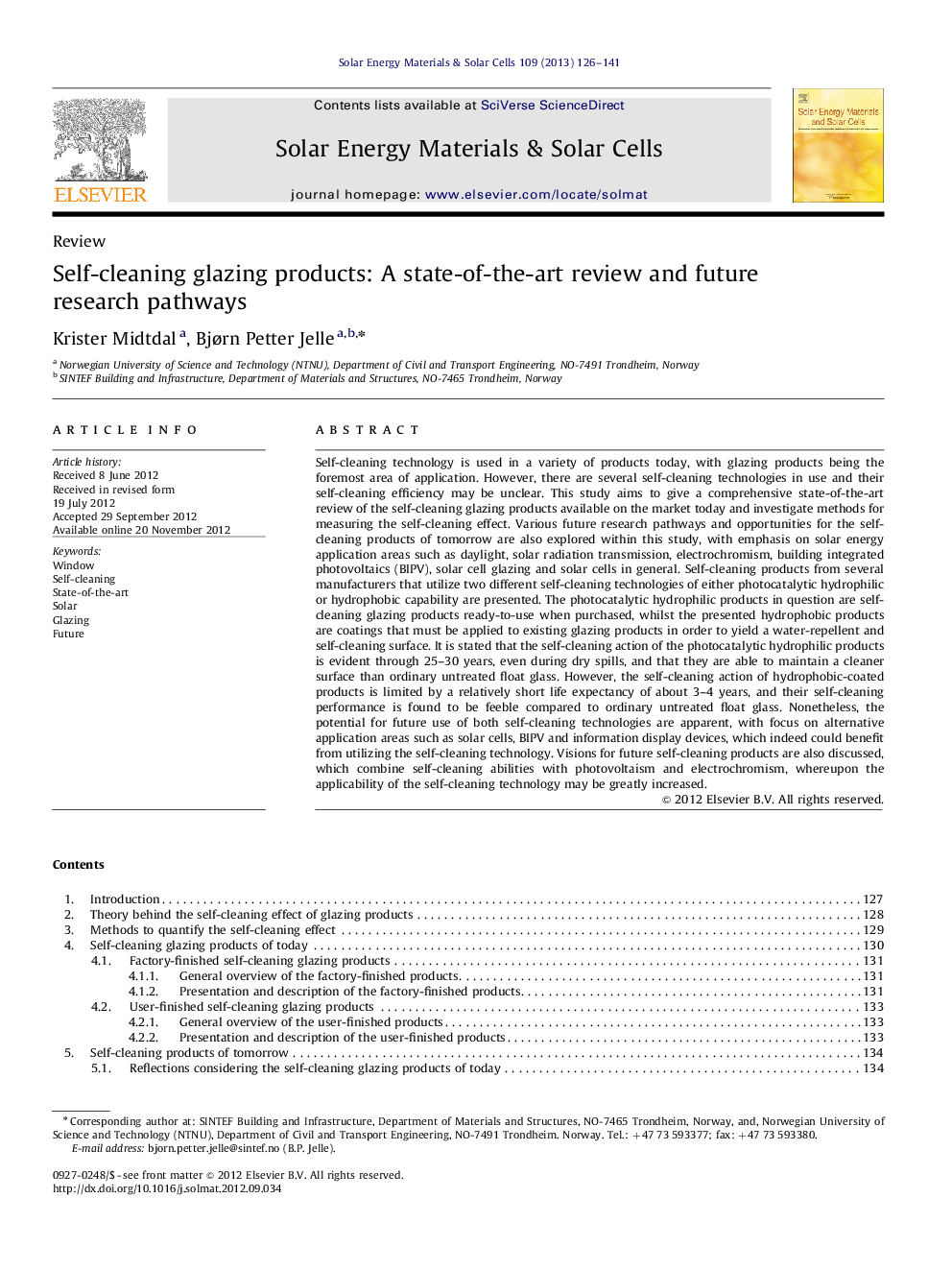| کد مقاله | کد نشریه | سال انتشار | مقاله انگلیسی | نسخه تمام متن |
|---|---|---|---|---|
| 78424 | 49331 | 2013 | 16 صفحه PDF | دانلود رایگان |

Self-cleaning technology is used in a variety of products today, with glazing products being the foremost area of application. However, there are several self-cleaning technologies in use and their self-cleaning efficiency may be unclear. This study aims to give a comprehensive state-of-the-art review of the self-cleaning glazing products available on the market today and investigate methods for measuring the self-cleaning effect. Various future research pathways and opportunities for the self-cleaning products of tomorrow are also explored within this study, with emphasis on solar energy application areas such as daylight, solar radiation transmission, electrochromism, building integrated photovoltaics (BIPV), solar cell glazing and solar cells in general. Self-cleaning products from several manufacturers that utilize two different self-cleaning technologies of either photocatalytic hydrophilic or hydrophobic capability are presented. The photocatalytic hydrophilic products in question are self-cleaning glazing products ready-to-use when purchased, whilst the presented hydrophobic products are coatings that must be applied to existing glazing products in order to yield a water-repellent and self-cleaning surface. It is stated that the self-cleaning action of the photocatalytic hydrophilic products is evident through 25–30 years, even during dry spills, and that they are able to maintain a cleaner surface than ordinary untreated float glass. However, the self-cleaning action of hydrophobic-coated products is limited by a relatively short life expectancy of about 3–4 years, and their self-cleaning performance is found to be feeble compared to ordinary untreated float glass. Nonetheless, the potential for future use of both self-cleaning technologies are apparent, with focus on alternative application areas such as solar cells, BIPV and information display devices, which indeed could benefit from utilizing the self-cleaning technology. Visions for future self-cleaning products are also discussed, which combine self-cleaning abilities with photovoltaism and electrochromism, whereupon the applicability of the self-cleaning technology may be greatly increased.
Journal: Solar Energy Materials and Solar Cells - Volume 109, February 2013, Pages 126–141